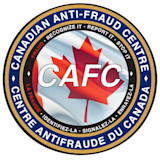
Online safety
Why do we keep playing when we feel unsafe? A teen's perspective
Explore a teen's perspective on online grooming in games and what parents can do to support.
Read article
Canadian Anti-Fraud Centre
www.antifraudcentre-centreantifraude.ca

The CAFC is receiving reports of fraudsters using QR codes in various scams to steal your personal information and/or money. Similar to fraudulent links or URLs, QR codes can be inserted into emails and texts to direct potential victims to fraudulent or malicious websites. Below are some of the variations we have seen:
Phishing with QR codes
Fraudsters may claim to be a service provider, government agency, or financial institution. Instead of asking the victim to click on a link or download an attachment, fraudsters will instruct the victim to scan a QR code.
Vendor fraud
Victims selling items are being targeted by QR code fraud. Fraudsters will send a fake payment advising that the victim must scan the QR code in order to receive a payment. If the victim scans the QR code, they will be asked for their online banking information putting them at risk for identity fraud. In another variation, fraudsters will send a QR code to the victim claiming that they are sending a payment but, in reality it is a request for a payment. When the victim enters their banking information, fraudsters will receive the payment or may gain access to the victim’s bank Account.
Cryptocurrency QR codes
Fraudsters are taking advantage of Canadians’ general lack of knowledge related to crypto currency. Fraudsters will ask for crypto currency as a payment in many different types of fraud. In many cases, fraudsters will send a crypto currency address in the form of a QR code. Victims are then directed to scan it to make a payment. In the end, payments will be sent to crypto wallets controlled by the fraudsters.
Warning signs – how to protect yourself
If you suspect you have been the victim of cybercrime or fraud report it to your local police and to the Canadian Anti-Fraud Centre’s online reporting system or by phone at 1-888-495-8501. If not a victim, report it to the Canadian Anti-Fraud Centre anyway.

Explore a teen's perspective on online grooming in games and what parents can do to support.
Read article
Explore safety tips for parents & youth to protect against grooming in online games.
Read article